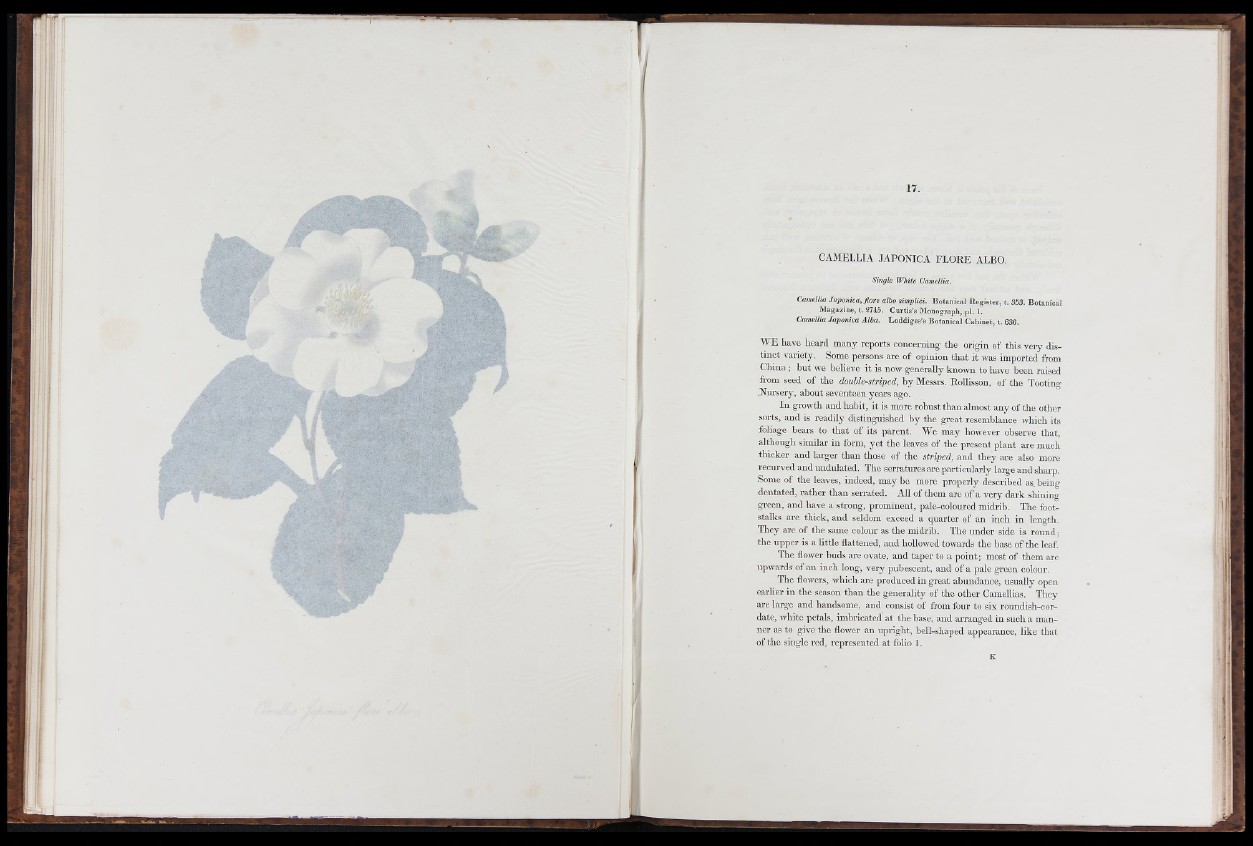
CAMELLIA JAPONICA FLORE ALBO.
Single W h ite Camellia.
Camellia Japónica, flo r e albo simplici. B o ta n ic a l R e g is te r , t. 353. B o ta n ic a l
M a g a z in e , t. 2745. C u r tis ’s M o n o g ra p h , p i. 1.
Camellia J a p ó n ica A lb a . L o d d ig e s ’s B o ta n ic a l C a b in e t, t . 636.
W E have heard many reports concerning the origin of this very distin
c t variety. Some persons are of opinion th a t it was imported from
China ; b u t we believe it is now generally known to have been raised
from seed o f the double-striped, b y Messrs. Rollisson, of the Tooting
.Nursery, about seventeen years ago.
In growth and habit, it is more robust than almost any of the other
sorts, and is readily distinguished by the great resemblance which its
foliage bears to th a t o f its parent. We may however observe that,
although similar in form, y e t the leaves of th e present plan t are much
thicker and larger than those of the striped, and they ai-e also more
recurved and undulated. The serratures are particularly large and sharp.
Some of the leaves, indeed, may be more properly described as. being
dentated, rather than serrated. All of them are of a very dark shining-
green, and have a strong, prominent, pale-coloured midrib. The footstalks
are thick, and seldom exceed a quarter of an inch in length.
They are of the same colour as the midrib. The under side is round;
the upper is a little flattened, and hollowed towards the base of the leaf.
The flower buds ai-e ovate, and taper to a point; most of them are
upwards of an inch long, very pubescent, and of a pale green colour.
The flowers, which are produced in great abundance, usually open
earlier in the season than the generality of the other Camellias. They
ai’e large aud handsome, and consist of from four to six roundish-cordate,
white petals, imbricated at the base, and arranged in such a ra-an-
ner as to give the flower an upright, bell-shaped appearance, like that
of th e single red, represented at folio 1.